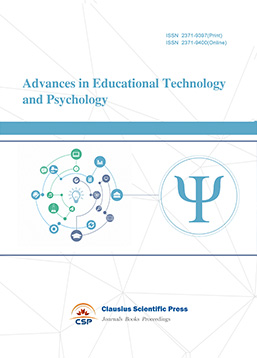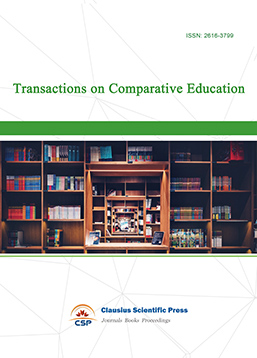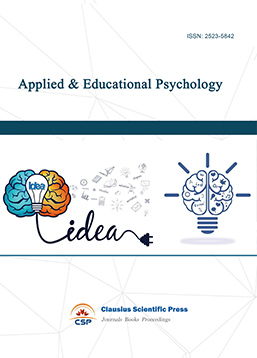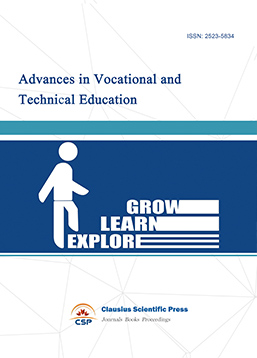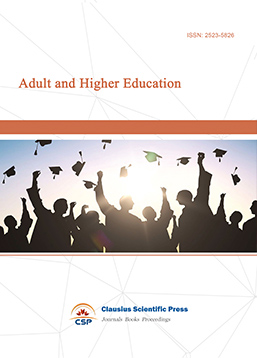Multimodal Discourse Analysis of English Reading and Writing Classes from the Perspective of Systemic Functional Linguistics
DOI: 10.23977/curtm.2025.080702 | Downloads: 32 | Views: 561
Author(s)
Yanqing Fang 1
Affiliation(s)
1 School of the English Language and Culture, Xiamen University Tan Kah Kee College, Xiamen, Fujian, China
Corresponding Author
Yanqing FangABSTRACT
This paper has examined the combination of multimodal discourse analysis and systemic functional linguistics within English reading and writing classes. By exploring how visual, auditory, and textual elements contribute to meaning, the study underscores the complexity and depth of communication in the classroom. Systemic functional linguistics provides a valuable theoretical framework for educators to understand how language interacts with other semiotic resources. This perspective is especially relevant in contemporary educational environments, where multimodal texts and interactions are becoming more common. The analysis demonstrates that adopting a multimodal approach not only enhances students' understanding of reading and writing tasks but also improves their ability to communicate effectively in various situations. It offers a more comprehensive view of learning, moving beyond traditional text-based methods and highlighting the importance of incorporating different modes of communication into teaching practices. As such, the integration of multimodal discourse analysis and systemic functional linguistics bridges the gap between theory and practice, leading to more engaging and effective English language instruction. The potential for further research and application of this approach in the classroom offers promising opportunities for enhancing students' literacy and communication skills in a world that is increasingly.
KEYWORDS
Multimodal Discourse Analysis, Systemic Functional Linguistics, English Reading and Writing ClassesCITE THIS PAPER
Yanqing Fang, Multimodal Discourse Analysis of English Reading and Writing Classes from the Perspective of Systemic Functional Linguistics. Curriculum and Teaching Methodology (2025) Vol. 8: 9-20. DOI: http://dx.doi.org/10.23977/curtm.2025.080702.
REFERENCES
[1] Ahmad Berjaoui, Eduardo Hugo Sanchez, Louis Roussel & Elizabeth Cohen Jonathan Moyal. (2025). Uncovering the genetic basis of glioblastoma heterogeneity through multimodal analysis of whole slide images and RNA sequencing data. Artificial intelligence in medicine, 16(3), 103.
[2] Al Darwesh Ahmad Qassim. (2025). The representation of authorial and external voice in popular science book writing: a systemic functional linguistics approach. Saudi Journal of Language Studies, 5(2), 108-127.
[3] Alex Christiansen, Shioma Lei Craythorne, Paul Crawford, Michael Larkin, Aalok Gohil, Spencer Strutt & Ruth Page. (2025). Multimodal Analysis of Stories Told by Mental Health Influencers on TikTok. Health expectations : an international journal of public participation in health care and health policy, 28(3), e70226.
[4] Arie Sugiyartati & Ni Luh Putu Setiarini. (2025). Mood and Theme-Rheme Realizations in Three Indonesian Fairy Tales and Their English Translations: A Systemic Functional Linguistics Approach. International Journal of Linguistics, Literature and Translation, 8(7), 37-45.
[5] Bukola Alfred & Ifeoluwa Olayinka. (2025). A multimodal discourse analysis of in-text images of Nigerian literature texts for primary schools. Language and Semiotic Studies, 11(2), 233-268.
[6] D H Nguyen, N Q Duy, N D Minh, N T H Anh & H X Tuan. (2025). Multimodal analysis in discrimination between glioma grade 2 and 3 on conventional magnetic resonance imaging. La Clinica terapeutica, 176(3), 294-300.
[7] Elena Mattei. (2025). The Language of Persuasion on Instagram:A Systemic Functional Approach to Multimodal Tourism Discourse. 10(4), 324.
[8] Eun Hee Nam & Myeong Hee Seong. (2020). Teaching Activities and Students' Preferences in Integrated College English Reading and Writing Classes. English Teaching, 75(2), 69-91.
[9] Hanan Hasan El Kanash & Anwar Rateb Al Khatib. (2025). An Intertextual and Multimodal Analysis of Jordanian Arabic Advertisements on Facebook. Journal of Language Teaching and Research, 16(4), 1350-1360.
[10] Jared D. T. Guerrero Sosa, Francisco P. Romero, Víctor H. Menéndez Domínguez, Jesus Serrano Guerrero, Andres Montoro Montarroso & Jose A. Olivas. (2025). A Comprehensive Review of Multimodal Analysis in Education. Applied Sciences, 15(11), 173-179.
[11] Kiyoaki T. Suzuki, Shun Tokita, Sylvain Dancette & Yutaka S. Sato. (2025). Multimodal analysis of aluminum-steel dissimilar joint interface: Strength improvement mechanism through Ni addition. Materials & Design, 255(12), 436.
[12] Lee Myong Kwan. (2019). The relationship between learning styles and learners' satisfaction in the integrated English reading and writing classes using flipped learning. Modern English Education, 20(4), 74-86.
[13] Szilvia Zörgő, Gjalt Jorn Peters, Anna Jeney, Szilárd Dávid Kovács & Rik Crutzen. (2025). A Multimodal Analysis of Online Information Foraging in Health-Related Topics Based on Stimulus-Engagement Alignment: Observational Feasibility Study. Journal of medical Internet research, 27(5), e64901.
[14] Tinca Lukan & Marni Appleton. (2025). Unveiling the girl boss sexual contract: A multimodal discourse analysis of female influencers in the United Kingdom, Sweden and Slovenia. European Journal of Cultural Studies, 28(3), 721-738.
[15] Yu Zhigang,Guo Enhua & Bu Zhanting(2020). The Routledge handbook of Systemic Functional Linguistics.FUNCTIONS OF LANGUAGE,27(1),100-112.
| Downloads: | 40327 |
|---|---|
| Visits: | 1749888 |

 Download as PDF
Download as PDF